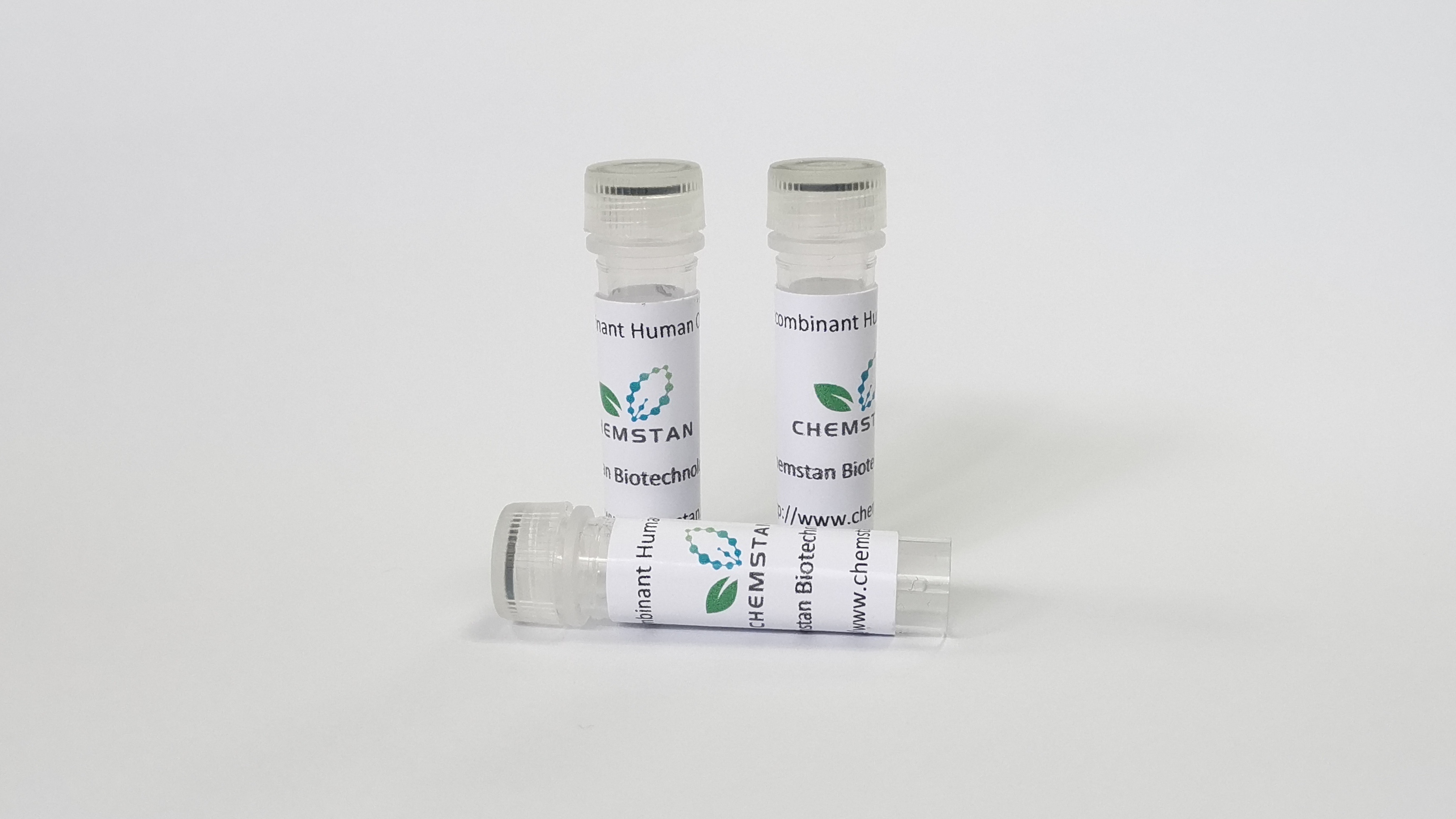
浏览量: 195
- 产品名称: Recombinant Human PAI1 protein
- 产品货号: CSP00133
- 货期: 现货
- 价格与订购: 1800
- 数量:
库存: 100
- 规格: 50μg 100μg 1mg
- 产品信息
- 如何订购
概述(Summary)
英文全称
Recombinant Human PAI1 protein
纯度(Purity)
>90% as determined by SDS-PAGE
内毒素(Endotoxin level)
Please contact with the lab for this information.
蛋白构建(Construction)
A DNA sequence encoding the human PAI1 (Gly21-Pro402) was fused with His tag
Accession #
P05121
表达宿主(Host)
E.coli
种属(Species)
Homo sapiens (Human)
预测分子量(Predicted Molecular Mass)
43.3 kDa
制剂(Formulation)
Supplied as solution form in PBS pH 7.5 or lyophilized from PBS pH 7.5.
运输方式(Shipping)
In general, proteins are provided as lyophilized powder/frozen liquid. They are shipped out with dry ice/blue ice unless customers require otherwise.
稳定性&储存(Stability &Storage)
Use a manual defrost freezer and avoid repeated freeze thaw cycles.
Store at 2 to 8 °C for one week .
Store at -20 to -80 °C for twelve months from the date of receipt.
Store at 2 to 8 °C for one week .
Store at -20 to -80 °C for twelve months from the date of receipt.
复溶(Reconstitution)
Reconstitute in sterile water for a stock solution.A copy of datasheet will be provided with the products, please refer to it for details.
背景(Background)
背景介绍
Plasminogen activator inhibitor 1, also known as PAI-1, Endothelial plasminogen activator inhibitor, SerpinE1 and PLANH1, is a secreted glycoprotein which belongs to the serpin family. SerpinE1 is the primary physiological inhibitor of the two plasminogen activators urokinase (uPA) and tissue plasminogen activator (tPA). Its rapid interaction with TPA may function as a major control point in the regulation of fibrinolysis. Defects in SerpinE1 are the cause of plasminogen activator inhibitor-1 deficiency (PAI-1 deficiency) which is characterized by abnormal bleeding due to SerpinE1 defect in the plasma. High concentrations of SerpinE1 have been associated with thrombophilia which is an autosomal dominant disorder in which affected individuals are prone to develop serious spontaneous thrombosis. Studies of PAI-1 have contributed significantly to the elucidation of the protease inhibitory mechanism of serpins, which is based on a metastable native state becoming stabilised by insertion of the RCL into the central beta-sheet A and formation of covalent complexes with target proteases. Greater expression of PAI-1 has been associated with increased survival of cells and resistance to apoptosis. PAI-1 appears to influence apoptosis by decreasing cell adhesion (anoikis) as well as its effect on intracellular signaling. PAI-1, in its active state, also binds to the extracellular protein vitronectin. When in complex with its target proteases, it binds with high affinity to endocytosis receptors of the low density receptor family. The mechanisms of PAI-1 overexpression during obesity are complex, and it is conceivable that several inducers are involved at the same time at several sites of synthesis. PAI-1 is also implicated in adipose tissue development. It suggests that PAI-1 inhibitors serve in the control of atherothrombosis.
分子别名(Alternative Names)
Plasminogen activator inhibitor 1,PAI,PAI-1,Endothelial plasminogen activator inhibitor,Serpin E1.
Note
For research use only .

 地 址:
地 址: 产品销售:
产品销售: E - mail :
E - mail : 邮 编:
邮 编:
 Amily
Amily


